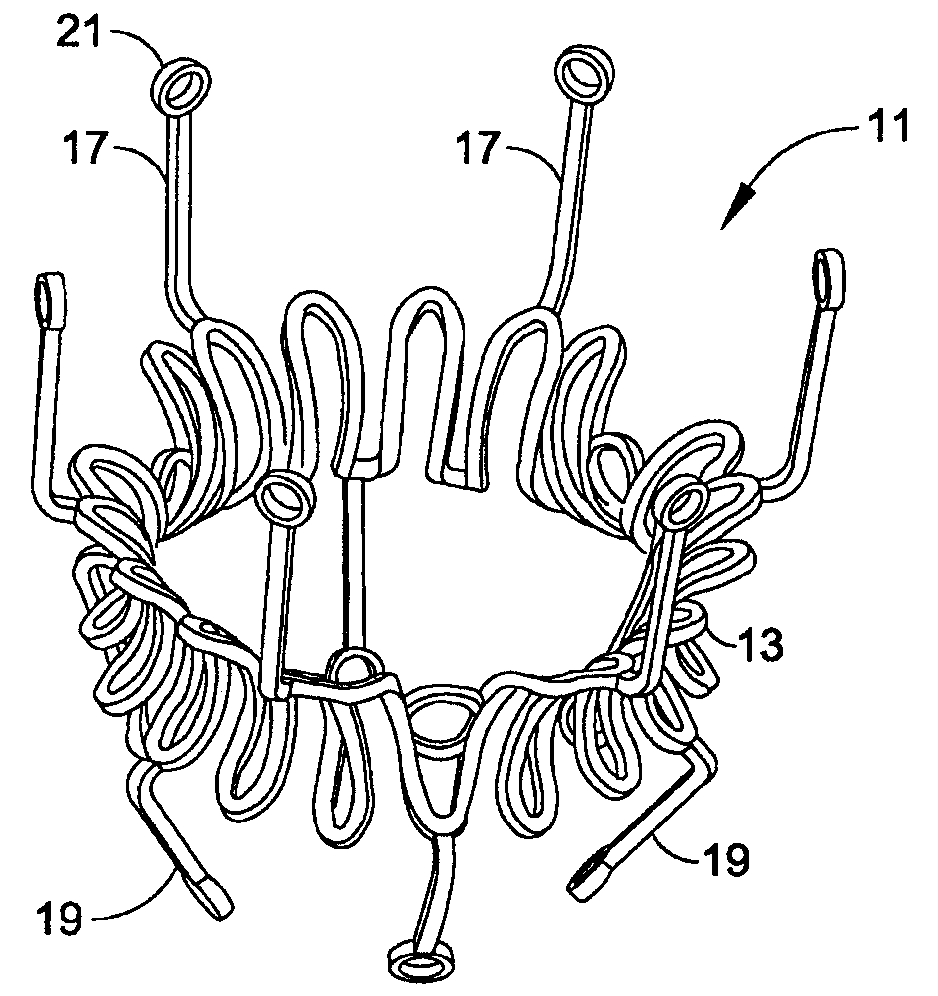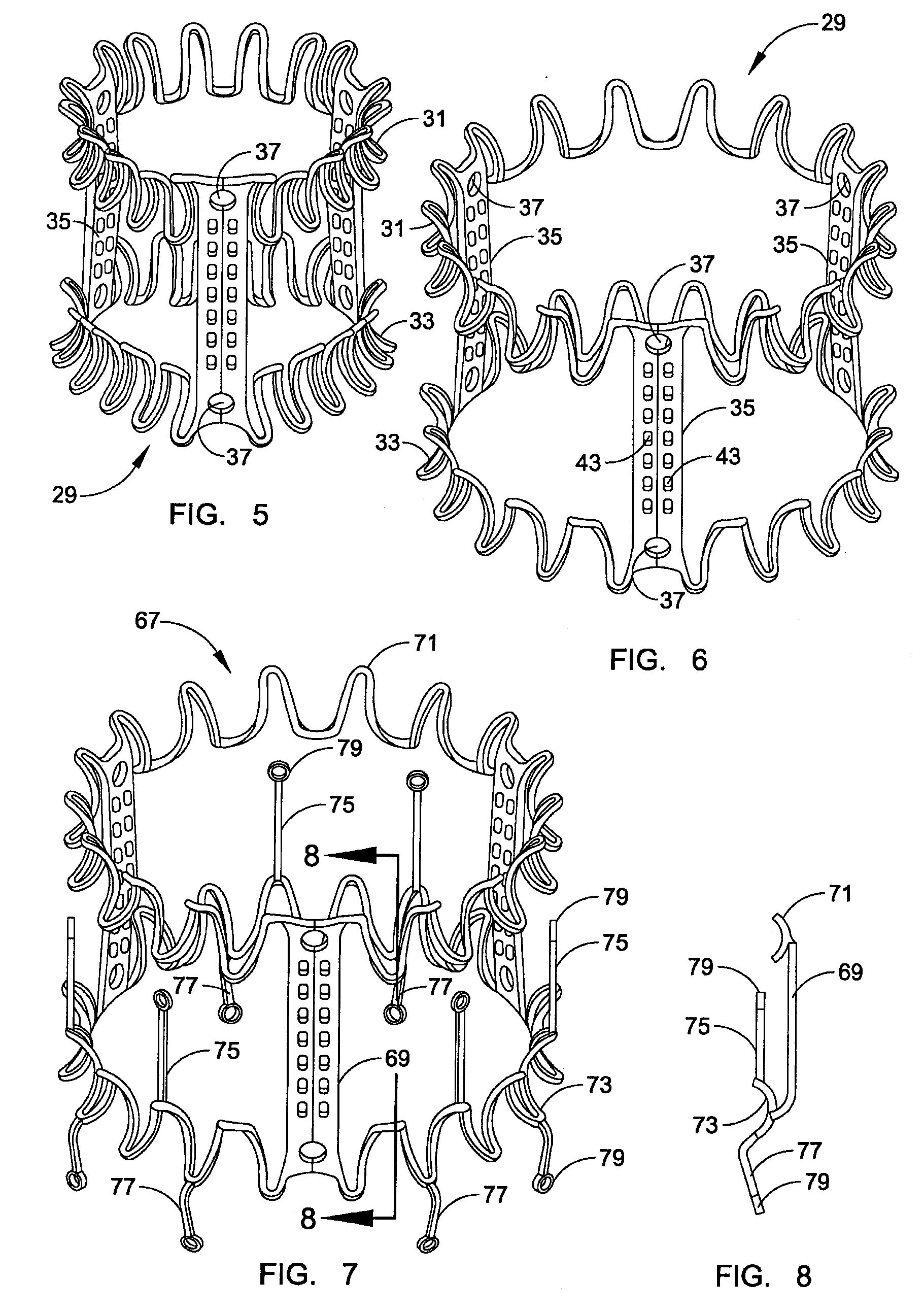Minimally invasive heart valve replacement
a heart valve and minimally invasive technology, applied in the field of prosthetic valves, can solve the problems of increasing the risk of embolism, affecting the health of patients, and the valve is too diseased to repair and must be replaced, and achieve the effect of minimal invasiveness
- Summary
- Abstract
- Description
- Claims
- Application Information
AI Technical Summary
Benefits of technology
Problems solved by technology
Method used
Image
Examples
Embodiment Construction
[0053]A first preferred embodiment of an anchoring framework structure 11 for an encapsulation envelope or anchoring device incorporating various features of the invention is shown in FIGS. 1 through 4. The framework has a tubular shape and is designed for anchoring a replacement heart valve at the location of a diseased native valve without excising the native valve. The encapsulation envelope has a tubular deployment form and includes this framework 11 surrounded with a covering layer of biocompatible thin sheet material (not shown). It is designed to be deployed in a collapsed condition using a delivery implement where it is slidably disposed within a catheter that is caused to enter the body through a cannula implanted intercostally in the chest, through which it is directed through the apex region of the heart and, for example, into the left ventricle, and then through the orifice of the aortic valve.
[0054]The encapsulation envelope framework 11 is made of wire-like material, w...
PUM
 Login to View More
Login to View More Abstract
Description
Claims
Application Information
 Login to View More
Login to View More - R&D
- Intellectual Property
- Life Sciences
- Materials
- Tech Scout
- Unparalleled Data Quality
- Higher Quality Content
- 60% Fewer Hallucinations
Browse by: Latest US Patents, China's latest patents, Technical Efficacy Thesaurus, Application Domain, Technology Topic, Popular Technical Reports.
© 2025 PatSnap. All rights reserved.Legal|Privacy policy|Modern Slavery Act Transparency Statement|Sitemap|About US| Contact US: help@patsnap.com



